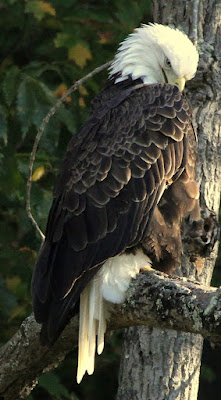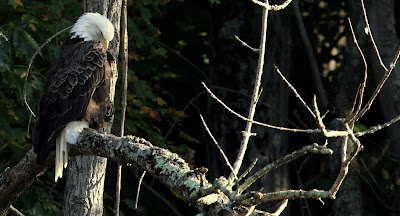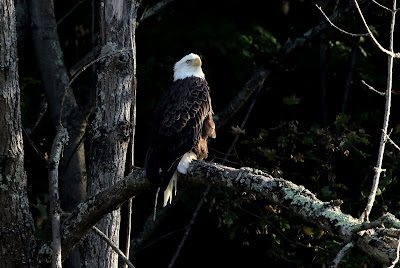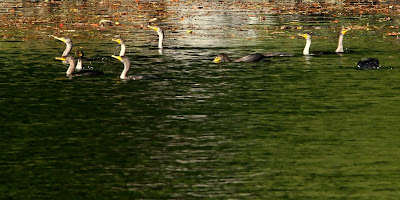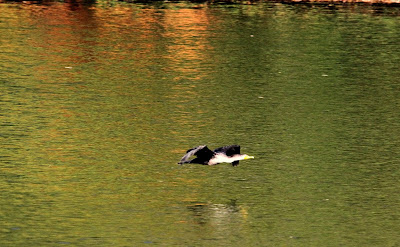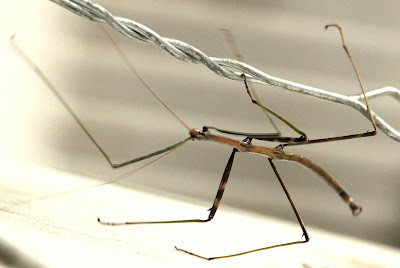THE LAST HUNT
The
muzzle loading hunting season for December, 1976 was about to start.
The Chevy Luv pickup made it's way up the highway in North Central
Pennsylvania to a place called Norcross. Norcross is an extremely large
tract of uninhabited mountains that runs from the town of Sinnamohning,
PA clear to New York state. It is rugged back in that mountainous
country. The two occupants of the truck, Bob and Terry, were planning
on being in the woods for the first day of flintlock deer season by
morning. The cap over the truck bed would be home for the overnight
stay.
The temperature was twenty
five degrees when they crawled out from under the truck cap in the
morning. Both boys were well equipped for the cold. Terry wore a full
Woolrich outfit composed of pure wool pants and heavy matching wool
jacket. On his feet were U.S. Air force flight boots he bought from
Army Surplus a week before this trip. He could pump air into a bladder
within the boots that would supply an invisible barrier to the cold.
Bob wore traditional hunting garb purchased from the local hardware.
His feet were protected by a new type boot that contained thick "felt"
packs. They were made in Canada and he was excited to try them. Each
of them would carry a 50 caliber Hawkin type flint lock rifle.
Pennsylvania law required and specified that this primitive fire arm was
the only acceptable weapon permitted during the special flint lock
season for deer.
In order to load
this type of rifle, the powder is poured down the muzzle of the rifle
followed by the round lead ball or possibly a slug. A ram rod would
then be inserted down the muzzle against the ball to force the
concoction clear to the breach of the barrel. Fine black powder would
then be poured into the small flash pan and the striker or fritz-en
closed over the now full pan. Ready to fire. All that would be
necessary to shoot is to pull the hammer back that holds a piece of
flint, aim and squeeze the trigger. The spark from the contact of the
flint to striker creates a spark that ignites the fine black powder in
the fritz-en. The spark from that ignition travels through the touch
hole which guides the flame to the main charge in the breach of the
barrel. The result is a sort of sch-kaboom. Flint locks have a bit of a
delay from the time the powder ignites in the flash pan and when the
main charge ignites in the breach. KaChink-Boom; if you will.

Terry was walking on the edge of a
high ridge where he could look down the steep slope of the mountain. He
saw deer from time to time but the distance was not acceptable for a
good shot. The ground to his right, which was flat and forested with
huge pines slowly changed in nature to an environment where blow downs
and scrub bushes existed. This expanse of land obviously had suffered
blight or maybe even a fire years ago. Terry's eyes constantly scanned
this new defoliated stretch of mountain. He could see farther as the
huge pines, for the most part, were gone. A distant boom sounded and
reverberated across the valley below him. Bob had scored. Bob never
missed. Bob was born in the Laural Highlands of Pennsylvania and
resided so far back in the woods that air was a difficult commodity to
acquire. His father was a highly skilled stone mason who was taught the
trade by his father. From father to son; Bob was blessed with that
talent and skill also. These folks worked with their hands. They were
people of the earth too. Bob's family lived almost entirely on what his
father planted or harvested from the forest.

Yes,
Terry was sure that Bob was successful with his one and only shot.
Terry had to score. He couldn't return to the truck empty handed. Just
at that moment a very small doe stepped from behind a bush
approximately seventy or eighty yards away. Terry froze. The little
deer would lower her head, paw the snow with her foot and grab some
morsel of grass or acorns with her mouth. Her head would then jerk
erect and she would turn to face right and left, scanning her
surroundings while chewing constantly. She would take one step and
repeat the process. Terry waited until the doe's head dropped to the
ground and he raised the rifle while placing his shoulder against the
base of a large oak tree for support. The hammer was then pulled back.
The deer was small; very small. He had seen large dogs as big as the
little doe. Normally he would not take the shot on so small a deer, but
surely Bob got one. It was late afternoon and he decided to go ahead
with the ambush. He did not want to face Bob empty handed. They were
both skilled hunters and woodsmen and those types always brought the
bacon home.
The deer took a step forward and
lowered her head. Terry squeezed the trigger and at that instant the
doe started another step. The big gun roared and belched orange flame.
The stock set against Terry's shoulder hard. "Must have put too much
powder in," he thought.
When the smoke cleared; the little
deer was on the ground. Then, to his amazement, she arose. Her left
back leg flopped loosely about. When she stepped forward, the shoulder
shot became a rear quarter, hip shot. the deer made a bawling sound.
Terry felt sickened at that cry. It sounded like a human baby. He was
instantly sorry for the deer. "How did that happen?" he thought.
He
quickly poured powder down the barrel and inserted the big 500 grain
pure lead slug. The wooden ram rod was withdrawn from the thimbles that
held it in place under the barrel of the rifle. Terry inserted the ram
rod into the end of the barrel until it touched the lead slug and
pushed hard to seat it against the powder charge. The wooden rod
snapped. Part of the wood was wedged between the slug and the inside
of the gun barrel and the other half was held in Terry's hand. The
splintered piece of wood could not be extracted from the barrel. The
rifle was rendered useless.
He watched the little doe try to
run, her leg flopping about as if it may come off somehow. He was
sickened. He could not walk away from this situation. He wore a belt
knife with a six inch razor sharp blade at his hip. Just maybe he could
approach close enough to the deer to run it down. He had to try. He
had caused this misery and it was his personal responsibility to end
it. He set off toward the deer at a brisk pace. The doe saw him and
tried to run. She completed two fast leaps and collapsed to the ground
and lay there. Fifty yards, thirty yards, ten yards. He walked very
slow at this point. The doe never took her eyes off him. At five yards
distance she bolted and almost immediately lay back down again. He ran
hard and fast toward her thinking he could catch her before she could
regain her feet. He almost achieved his goal. He closed to within one
yard of the deer when she ran. She was in agony and he was the cause of
it. If he could maintain his speed he would overtake her. But, he
couldn't. Perspiration poured from his face and his body was hot. The
Woolrich coat had to go. He would get it later. He felt much better
without the heavy restrictions of the coat.

The
doe lay twenty feet away on the edge of a long mountain slope that had a
stream at the bottom. again he walked toward the deer. He noticed the
splintered hip bone protruding through the big hole in her hip caused
by the badly placed shot. She watched his approach. Just a few feet
more, he thought. She went to her feet and started another run. Terry
was very close. His lungs ached as he ran. He had never put this much
effort into a sprint in his life. He was closing on the wounded doe.
Just a couple more seconds and he would tackle her. But then, the deer
changed course and ran straight down the mountain side. Wounded game
will always take the easier path. Terry turned with the deer without
missing a stride. The doe slowed. He was beside the flopping leg when
he leaped upon her back causing them both to tumble down the hill side.
He lost his grasp of her at some point. He stopped rolling and came to
rest on his hands and knees. There in front of him lay the doe staring
at him. Her mouth was open gasping for air and her eyes were wide in
panic. She was experiencing a terror she had never known. Terry took
in huge breaths of air as he stared at the crippled doe. His hand
slowly went to the hilt of his knife and he withdrew it from the
sheath. They stared at each other. Her eyes were wide and unblinking.
A feeling of shame arose in his chest. He suddenly thought, "what's
this all about?"
Her eyes, even when filled with terror, were perfect and beautiful.
Even in this despicable situation she appeared alert, with ears up as if
she hadn't given up. The short brown hair that covered her body was
outlined with white. It was perfect, accept where the ragged hole
seeped blood and stained her hip. He caused all that. He had a sense
that he had violated nature. He became sickened.
There was no sense prolonging the deer's agony. He slowly stood to a
crouching position and moved across the three or four yards that
separated them. The doe had to raise her head and look up to follow
his eyes; he approached that close. He felt like an executioner. He
had the power. He had the power of death that he would have to use to
end the misery that he had created in her. She was the victim. She was
the repressed. He was strong and she was weak. He would win and she
would lose on this day. But, in the end it would be he who would lose.
He held the knife out from his right side and with a powerful sweeping
motion struck the doe across the throat with the knife. She never
flinched or blinked her soft eyes. Her stare penetrated to his soul.
Her eyes never moved from him once. Blood pulsed from her slashed
throat with each beat of her heart; and still she watched him.
She seemed to say; "Why are you doing this to me? What have I done to deserve this horrible death at your hands?"
He could not answer that question;; the question why.
Her eyes became sleepy looking and the brightness was gone. At last she
blinked and her eyes closed shut. The blood poured forth endlessly.
Slowly she moved her head back along her body and tucked her nose just
under her back leg as if sleeping. Her breaths were shallow. Terry
watched her until her chest stopped the rise and fall movements that
indicate life. She, at last found peace.

He
prepared her body and carried her back to the truck. The climb up the
mountain to retrieve his rifle and coat was tiring. As they drove away
from Norcross, a decision was made by Terry. This would be the last
animal he would ever kill out of sport. No more. He did not want to
enter the forest for the purpose of causing death to nature's beautiful,
innocent sons and daughters. He could not make sense of it any
longer. The experience of this day would live in his mind forever and
the sadness he felt for the little doe would return to him many times in
his life. The memory of her terror filled eyes haunts him to this day.
And he still can not answer her question of "Why."

















